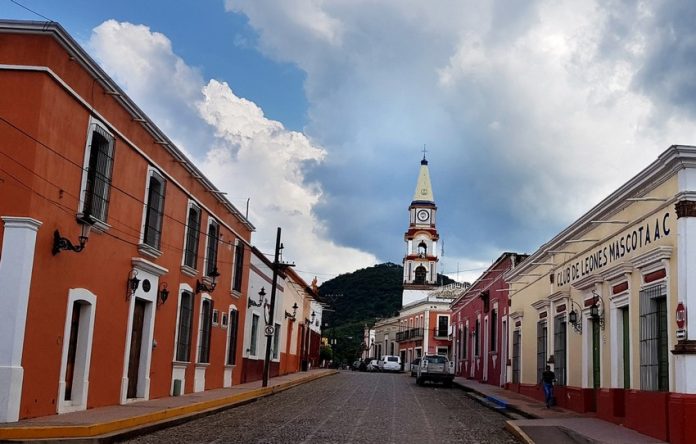Mascota, Jalisco, is a charming little town located three-fourths of the way between Guadalajara and Puerto Vallarta as the cuervo flies, with a history that goes back countless centuries, long before the Spaniards arrived.
Twenty years ago, guide books like the Lonely Planet series had not a single word to say about Mascota, no doubt due to the ever-twisting, bone-rattling, rock-strewn, dirt road that used to connect the town to the rest of Mexico, inevitably smothering the traveler for endless hours in great clouds of choking white powder.
Nowadays, this road is beautifully paved, and despite its twists, more and more people are discovering that Mascota definitely deserves the title Pueblo Mágico, or Magical Town, which Mexico’s Tourism Ministry officially gave it in 2015.
The name of the town has nothing to do with the Spanish word mascota (pet or mascot) but seems to come from the Náhuatl word maza-ocotl-atl, meaning “place where you find deer, pines and snakes.”
Last weekend, I headed for Mascota with the intention of scouting out nearby El Malpais Volcanic Park, a lava field said to contain some of the world’s youngest minettes.
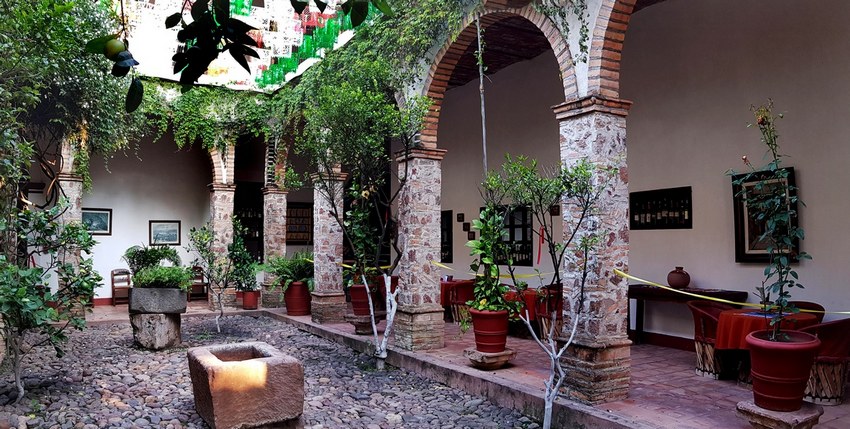
A minette is defined either as “a beautiful French girl” or as “an igneous rock with phenocrysts of biotite, hornblende, augite and olivine.” I figured we’d be happy if we ran into either one or both in the hills outside Mascota, so off I went with a group of friends interested in doing something different.
If you drive to Mascota from Guadalajara, there are two delightful spots you may want to visit along the way. One is the little town of Guachinango, whose gloriously shimmering church is covered with thousands of shards of porcelain plates, cups and saucers.
The second site is a small but surreal mountain called La Campana, or The Bell, situated right next to the highway and decorated with bizarre, wave-like rock shapes. Although you can walk from the bottom to the top in 20 minutes, most people spend a couple hours on La Campana, soaking up its good vibes.
At midday, we reached our hotel: El Mesón del Refugio, a fine example of Mascota’s attractive casonas, grandiose old buildings which now serve as hotels.
El Mesón del Refugio was, in fact, the very first casona in Mascota to be licensed as a hotel. Built in 1847, it has a delightful patio surrounded by big rooms with thick walls. The ceilings are so high, you need a fire truck to change the light bulbs. Don’t be surprised when you’re handed a room key so big it won’t fit in your pocket!
We ate lunch at Restaurante Navidad, located near the plaza, said to be the most popular place to eat in Mascota. Afterward, we wandered over to the Centro de Cultura (Culture Center) to visit one of the very best small-town museums in all Mexico. The treasures you will find here are mainly thanks to the archaeological skills and hard work of Dr. Joseph Mountjoy, who lives in Mascota and has been exploring its surroundings for many years.
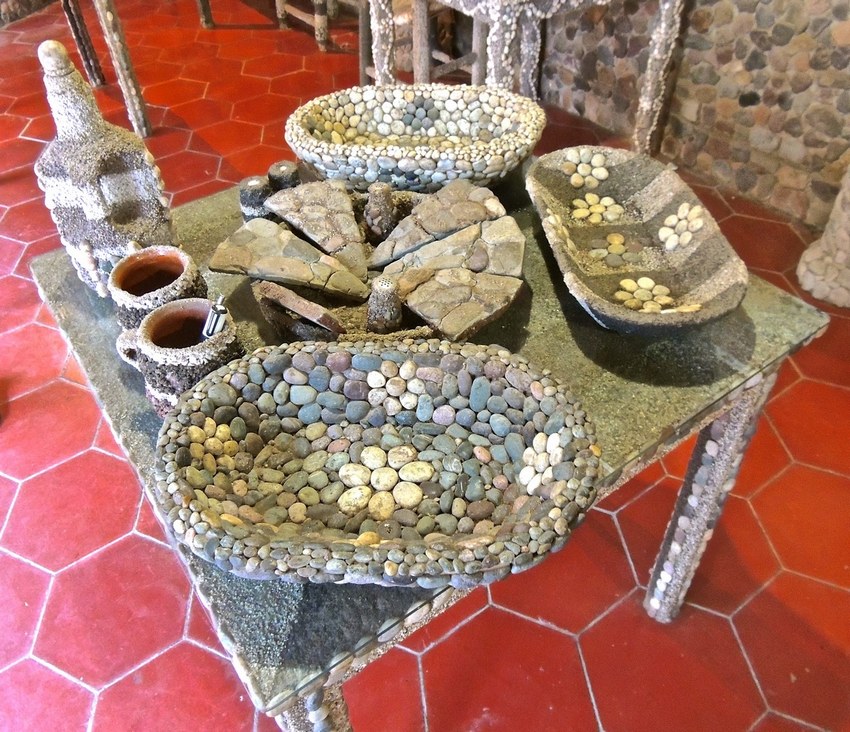
Because the area abounds in petroglyphs, you’ll find a whole room of the museum dedicated to them, with excellent pictures taken by National Geographic photographers. Here you will also have an opportunity to gaze upon a genuine patolli, a pre-Hispanic version of the game of Snakes and Ladders, chiseled onto the surface of a large and flat horizontal rock.
Many of the extraordinary finds presented in this museum are well described in Jim and Carole Cook’s excellent blog, which also takes you on a tour of the town’s very curious Museo de Piedra (Stone Museum).
Next, we headed north out of town towards Parque Municipal Petrificado el Malpais, guided by Google Maps. We followed reasonably decent country roads for five kilometers and then found our way blocked by a locked metal gate. Next to the gate stood a rancher.
“Is this the way to Parque el Malpais?” we asked him.
“¡Este parque no existe!” said the farmer: “This park does not exist!”
My eye wandered up the hill behind the gate where even my poor old eyes could see the lava field we were looking for.
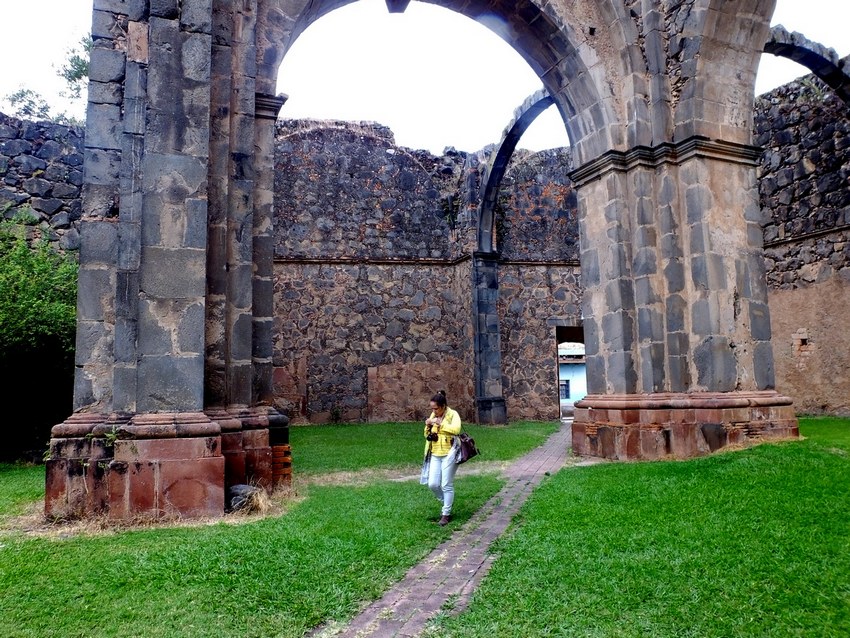
“How about if we park outside your gate and go up on foot?” we tried.
“No existe este parque,” repeated the man, “and therefore there is nothing to see.”
So ended our excursion to El Malpais. I suggest you cross it off your bucket list and instead, perhaps, go for a walk around the grounds of Mascota’s Templo Inconcluso de la Sangre Preciosa (Unfinished Temple of the Precious Blood).
I doubt if you’ll find any minettes there, but you will surely be awestruck as you wander beneath its great arches and towering walls never joined together or roofed — a monumental wonder sprung from the mind of its architect.
Work on this church started in 1905, and as its name indicates, was never finished, although the builders certainly gave it their best shot.
Before leaving Mascota, we decided to pay a visit to Juanacatlán Lagoon, which lies 12 kilometers northeast of town and nearly 800 meters above it. The lagoon is the showplace of the Sierra Lago Resort & Spa, which I heard was beautiful and expensive but which I had never had a chance to visit.
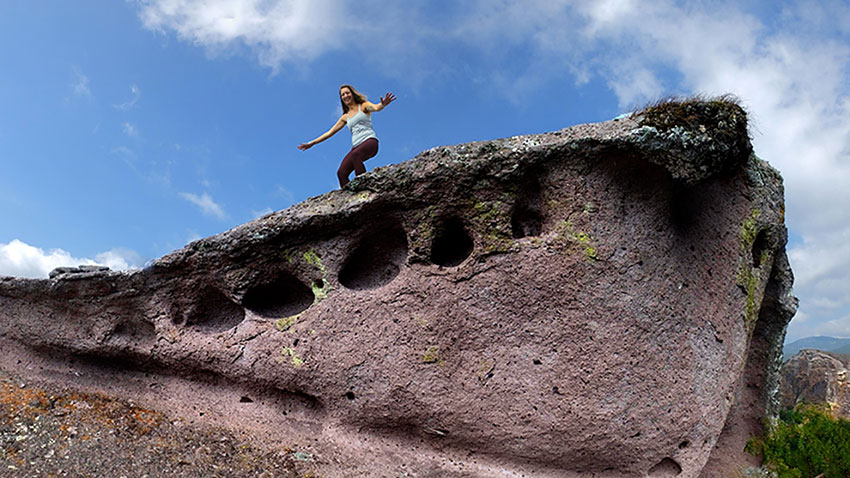
The road to Sierra Lago starts off paved with four strips of concrete. These are soon reduced to two strips, and at the end you are on cobblestone or dirt. The gain in altitude guarantees dramatic changes in flora and fauna, and the higher you go, the more breathtaking the scenery.
More than once, we stopped just to get out of the car and gawk at the extraordinarily tall pine trees and the gorgeous madroños (strawberry trees). There are also plenty of “sad pines,” Pinus lumholtzii, considered rare or endangered in many places.
Of course, one can’t gawk too long because the road is rather narrow and it’s no fun to meet a car coming the other way, especially at one of those points with a steep cliff on one side and a 200-meter drop on the other.
After driving 17 kilometers from Mascota, we reached the imposing gate to Sierra Lago, which we were told we could enter. However, we wouldn’t be allowed use of any of the facilities, including the restaurants, which are reserved for paying guests.
The moment we saw the lake down below, we were hooked by its beauty. Strolling along its shore simply enraptured us.
The Sierra Lago people have gone to great lengths to make the place even more attractive, circling the kilometer-long lagoon with a wide malecón (shoreline sidewalk) dotted with elegant sculptures and benches.
[soliloquy id="126397"]
Dressed for hiking through lava rubble, we felt a bit out of place in this posh setting, but Juanacatlán, like every other body of water in Mexico, is federal property, and so Mexicans, as well as foreigners, have a perfect right to jump into the water or stroll along the lagoon’s perimeter.
Recognizing this, Sierra Lago has even designated an area where the public can camp free of charge.
I am delighted to add Juanacatlán Lagoon to my list of Mascota’s secrets, and I definitely plan to continue investigating all of them, even the ones that “don’t exist.”
The writer has lived near Guadalajara, Jalisco, for more than 30 years and is the author of A Guide to West Mexico’s Guachimontones and Surrounding Area and co-author of Outdoors in Western Mexico. More of his writing can be found on his website.
